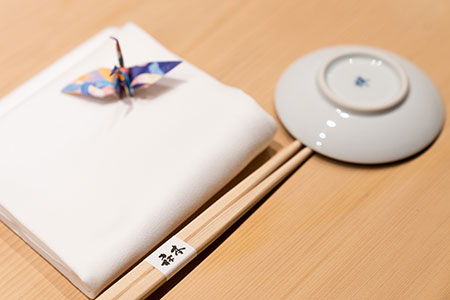Tokyo's long celebrated restaurant scene is not just about superlative food: add a sprinkle of flexibility combined with some first-class hospitality - and the end result? Restaurants such as atelier morimoto XEX, where guests can enjoy a bespoke culinary experience which is unique, atmospheric and always memorable.
The stage is set. The chef, elegant in white hat and apron, stands behind a circular sweep of black
stone illuminated by spotlights, as jazz plays in the background and the performance begins.
Fast and fleeting, the chef's hands dance across a hot plate before a medley of wagyu beef, kale and garlic vanishes into a hiss of steam beneath a metal dome,
which, minutes later, is lifted with dramatic flourish - and dinner is served.
The experience of visiting atelier morimoto XEX in Tokyo goes far beyond eating: it's the whole
memory-making package of atmosphere and hospitality, style and service - crowned by exquisite
cuisine.
Tokyo has long been a byword for world-class food. Visitors are spoilt for choice in a city home to the
world's highest concentration of Michelin starred restaurants, from tiny sushi counters to skyscraper
dining with jaw-dropping views.
Best of all is the fact that many restaurants are pure one-of-a-kind - such as atelier morimoto XEX.
Hidden behind a sliding black door on a quiet lane in Roppongi, the restaurant is the brainchild of
charismatic chef Masaharu Morimoto, renowned in both Japan and the US from the Iron Chef TV show.
Like the chef himself, atelier morimoto XEX is not afraid to break the rules - as reflected in the menu,
which unusually offers a mix of Japanese cuisines rather than a single specialty.
Edomae-style sushi is prepared at a serene hinoki wood
counter on the first floor; while fusion-style teppanyaki - anyone for oyster foie gras with uni (sea urchin)? - sizzles on hot plates in
the stylish basement and deluxe private rooms (favorite spots for discreet Hollywood regulars).
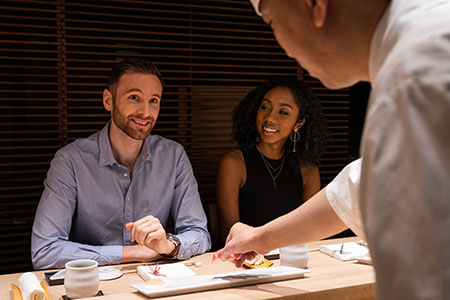
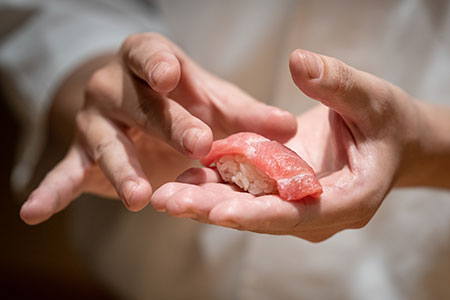
Mirrored corridors, spiral staircases and chandeliers connect several dining spaces throughout, while a
more sedate post-prandial pace unfolds in the elegant bar - the perfect place for a digestif and cigar.
The biggest luxury is perhaps its flexibility. While Japanese restaurants rarely deviate from set menus,
here, it's all about the ultimate bespoke experience (be it a request for vegan cuisine or even sushi salmon cooked on the teppan counter). Unusually late
opening hours also make it particularly convenient for overseas visitors.
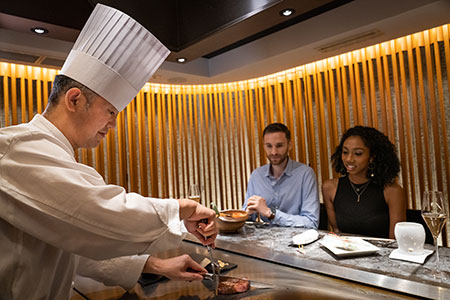
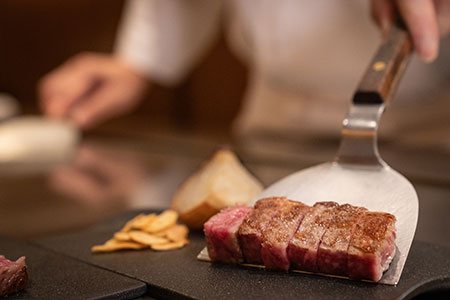
"Morimoto-san always says the food should account for 30 per cent, and the remaining 70 per cent is
hospitality, atmosphere, experience," explains operations director Yasushi Obayashi. "Everything depends
on the customer: we are never strict and always flexible."
First class omotenashi hospitality is reflected by English-speaking staff such as
kimono-clad Sayuri Makino, who smoothly straddles the traditional and the contemporary. Not to forget an
exquisite attention to detail - from origami cranes on plates and real insects
creating the authentic sound of Japanese summers in the sushi section to its signature roll-wrapped
salad, tied with an ornamental fastening of red and white string - an auspicious traditional art form
known as a mizuhiki.
